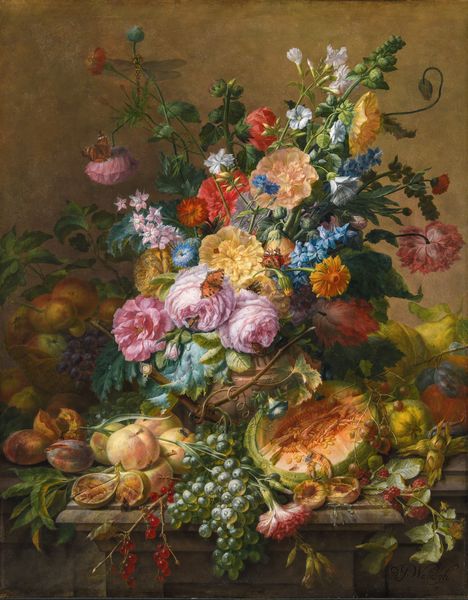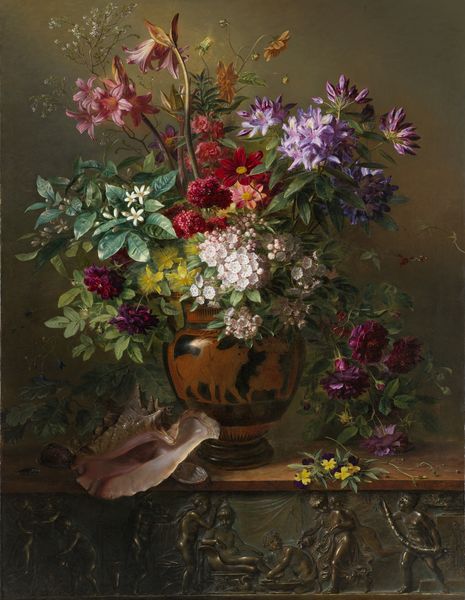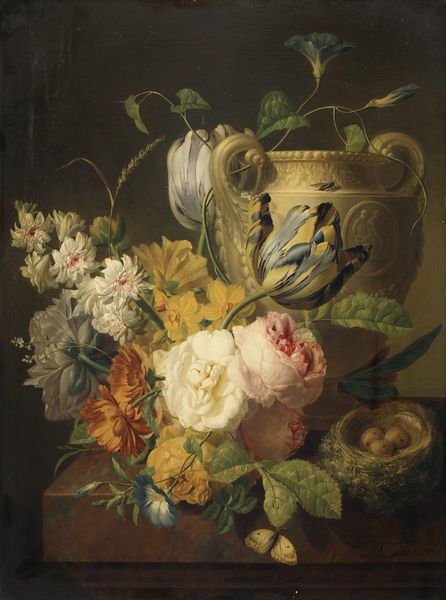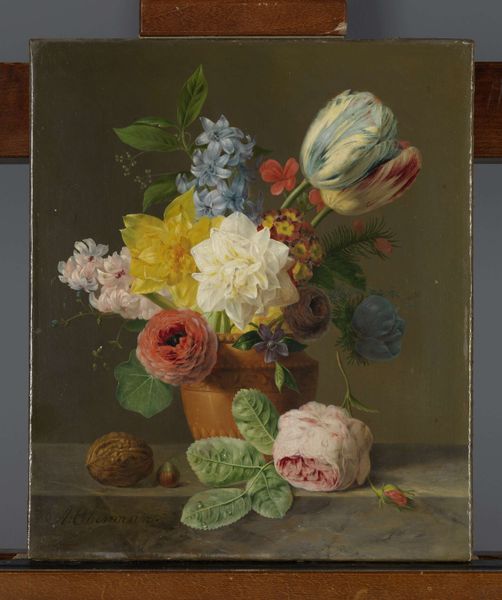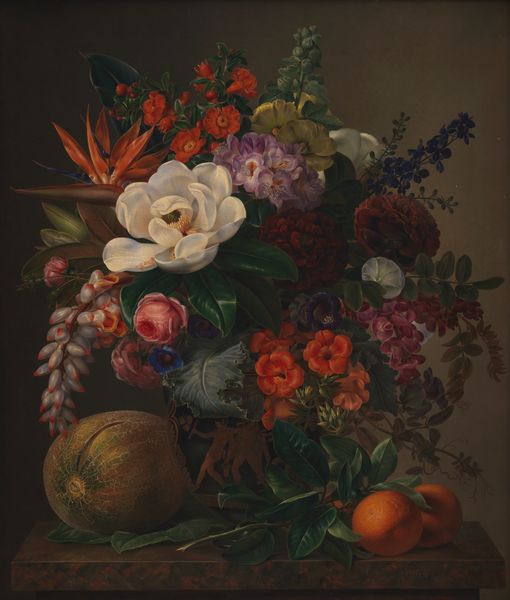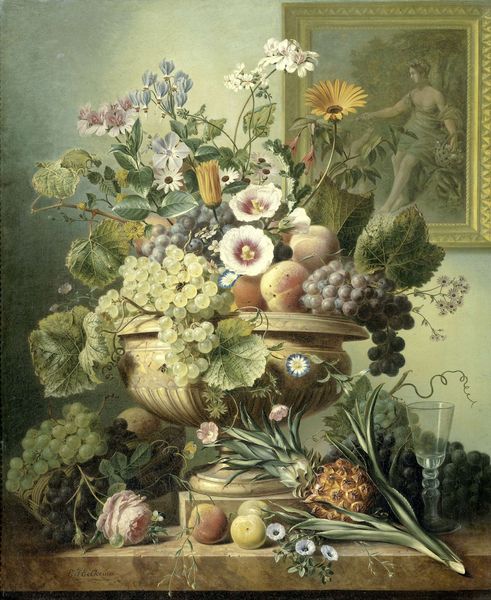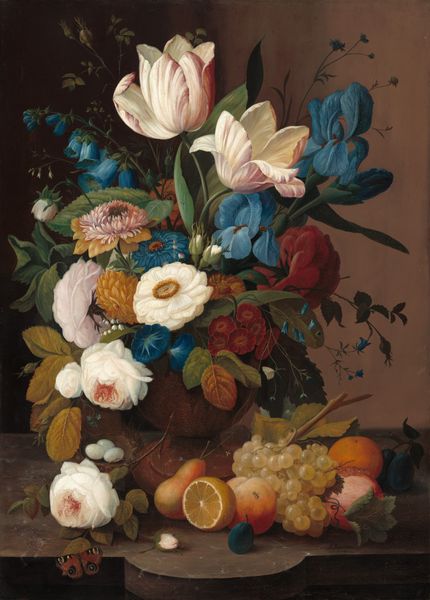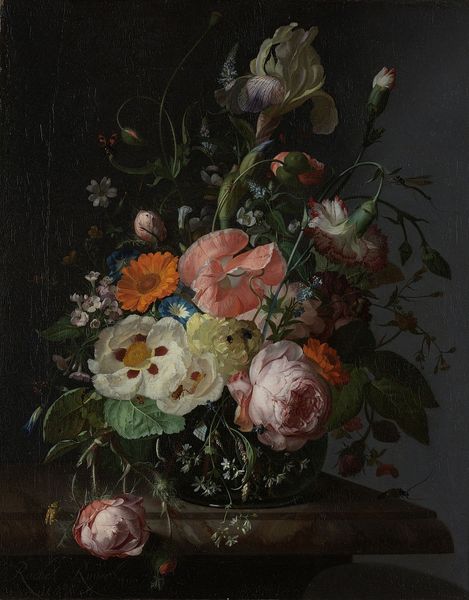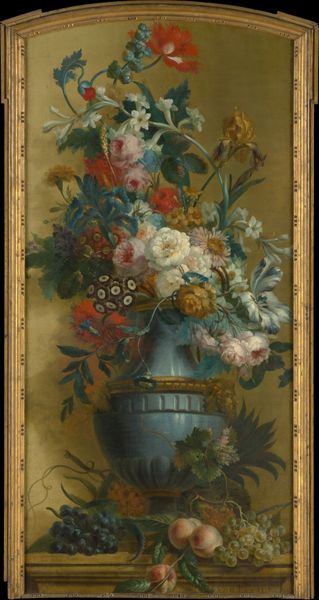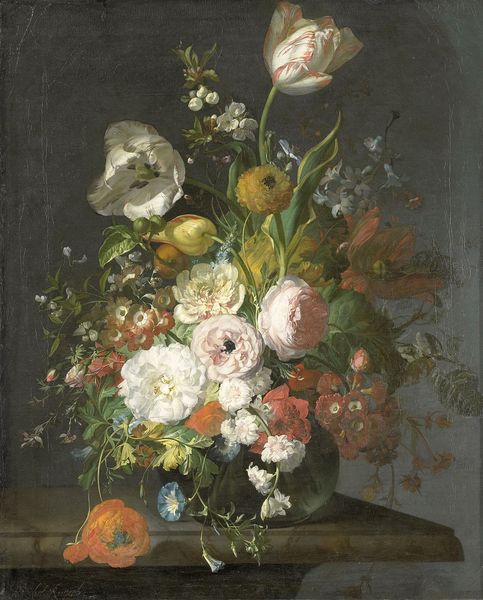
gouache
#
gouache
#
neoclacissism
#
gouache
#
flower
#
oil painting
Dimensions: height 80.5 cm, width 64 cm
Copyright: Rijks Museum: Open Domain
Curator: Looking at this, I can’t help but imagine a perfumer's laboratory, or a fashionable parlor where powdered wigs held court amidst discussions of botany and the latest French novels. Editor: The artwork before us, residing at the Rijksmuseum, is "Flower Still-life with an Alabaster Vase," created in 1783 by Gerard van Spaendonck. He employed gouache to bring it to life, demonstrating his skill with this challenging medium. Its hard not to wonder if Spaendonck intended to mimic the aesthetic of oil painting through the laborious use of gouache? Curator: Gouache, yes! It allows for this amazing density, a kind of velvety texture that’s almost edible. And the light, doesn’t it feel theatrical? Each flower seems to pose, waiting for its close-up. It has the charm of a fleeting moment that's almost captured forever, preserved like a fly in amber, you might say. Editor: The vase and sculptural base are quite literally the material bedrock of the image and, further, seem to reinforce the Neoclassical aesthetic: this idealized tableau as the artistic representation of enlightened European power. But, of course, the materiality speaks to wealth—a collection of seasonal flowers available at any time suggests both complex international trade and a level of consumption afforded by very few. Curator: I find myself completely charmed! Thinking about the transient, fleeting nature of these blooms contrasted with the heavy marbleized alabaster and classically themed base—it makes the work even more delicious. The effect is strangely moving, isn't it? These cut flowers already symbolize a kind of demise or impending fall. Editor: Indeed. Beyond just simple aesthetic, Spaendonck created here a very loaded piece with complex symbolic content—an aspirational monument constructed for both patron and posterity out of nothing but paper, pigment and binder. Curator: Absolutely, I leave this image with a sense of lightness and admiration of something, which contains an entire life in such a simple composition. Editor: On the other hand, what sticks with me most is how even a seemingly simple still life reflects elaborate, and potentially unjust, material systems. It leaves me contemplating how little has changed in two and a half centuries.
Comments
rijksmuseum about 2 years ago
⋮
Gerard van Spaendonck from Tilburg made his career in Paris, where he rose to become the botanical painter of the king of France, a highly distinguished position. His flower still lifes were considered as the best in his time. Exhibited at the Paris Salon in 1783, this painting was praised for the true-to-life flowers, insects, and objects. The window of the artist’s studio is reflected in the alabaster vase.
Join the conversation
Join millions of artists and users on Artera today and experience the ultimate creative platform.
